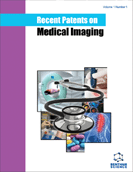Abstract
Stroke is the 3rd leading cause of death in the developed countries. It will rank the 2nd among the four leading causes of death globally by 2030 according to the World Health Organization. Carotid atherosclerotic disease is a predominant cause of stroke resulting from carotid plaque rupture. Degree of stenosis, which is the current criterion for assessment of atherosclerotic disease severity, has been observed to be insufficient. Atherosclerotic plaque is composed of various components, such as lipid-rich necrotic core, haemorrhage and calcium, covered by fibrous cap. Increasing evidence has shown that plaque vulnerability has a close relationship with these morphological features. Moreover, under physiological conditions plaque experiences mechanical loading due to blood pressure and blood flow. From the mechanical view point, rupture possibly occurs when the extra loading exceeds the material strength of the plaque. Therefore, anatomical and mechanical features should be considered in an integrated way for a more accurate assessment of plaque vulnerability. This review focuses on (1) the emerging high-risk morphological features and their association with clinical symptoms. Some related patents have been summarized; and (2) translational clinical application of biomechanical analysis in plaque vulnerability assessment. For completeness, the basis of atherosclerotic plaque, magnetic resonance imaging and finite element analysis will be introduced briefly.
Keywords: Atherosclerosis, biomechanics, carotid, magnetic resonance image, plaque, rupture, stress.
 18
18

